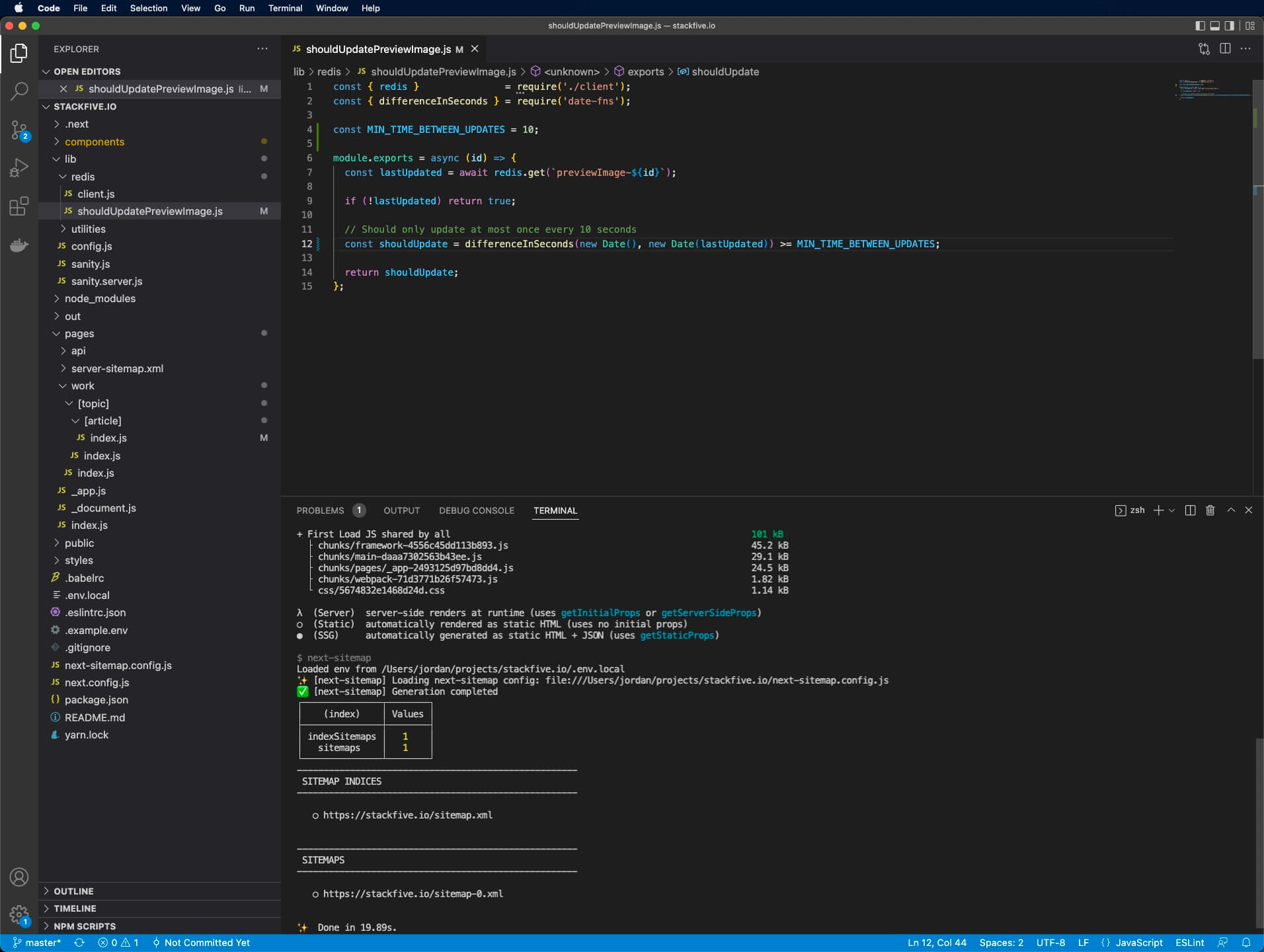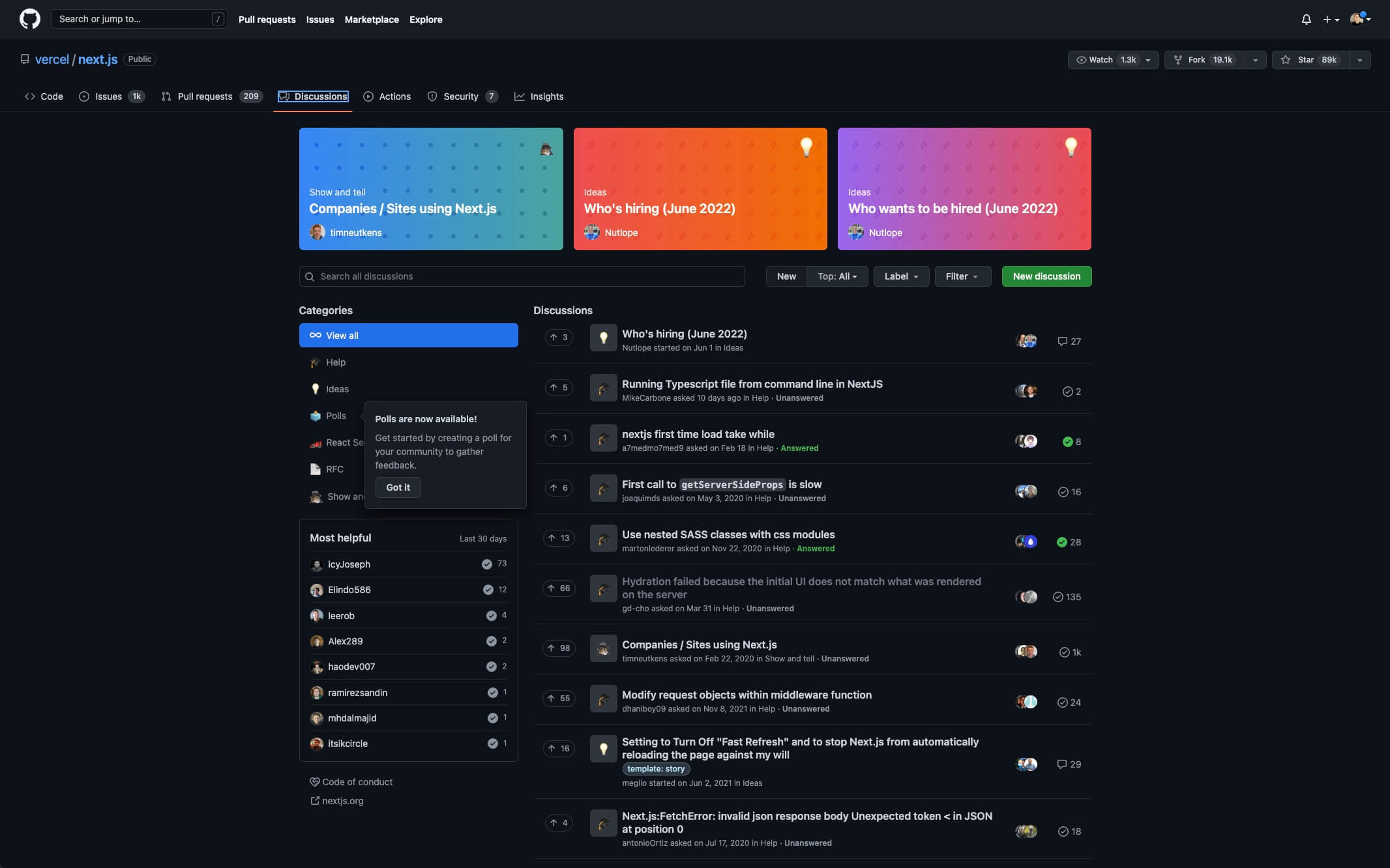Why You Should Use Next.js and Vercel in 2024
July 2, 2022
3 min
If you’re involved in the web software industry, you’ve probably heard of Next.js. It is the tool of choice for many agencies and developers due to a variety of factors such as its flexibility and ability to deliver just about any type of digital experience on the web you can think of. There are so many practical use cases for Next.js.
Great Developer Experience
Next.js uses a mix of React and Node.js to bring an excellent developer experience. We can use it to create rich front-end applications that support server-side rendering, static pages, and incremental static regeneration. We can also use it to build API layers for our front-end applications to use, and even expose these endpoints to other applications. Because JavaScript can be written isomorphically in Next.js page components, this creates an incredible amount of flexibility.

Next.js' rich developer experience
High Availability
Next.js applications can be deployed to the Vercel network which deploys server functions to "the edge". It uses Edge Runtime which is lighter weight than Node.js for very fast response times and low latency in production. Static pages and server-side rendered content are also managed very efficiently by Vercel and can handle a tremendous amount of concurrent requests. This gives our team the peace of mind to build and ship scalable products with very little configuration or maintenance needed, and very high availability.
It Handles Dynamic Apps Extremely Well
If content changes quickly, or there is a need for content to relate to each other, Next.js is a fantastic tool for the job. For a great example of how it can be used, check out our article on how we rebuilt our website using Next.js and Sanity.io.
Affordable
Because Next.js is open source, it is completely free to use. Vercel’s generous free tier allows teams and startups to deploy their full-stack applications to the Vercel network for free. As applications scale, teams can confidently grow alongside the Vercel network without fear of hidden fees. But the beautiful part about building apps with Next.js is that you don’t even need to deploy it on the Vercel network. This gives teams the flexibility to deliver their product however they’d like and have full control over everything from DevOps to sharing and selling their software.
Customizable
Extending or building on top of Next.js is extremely efficient. Since Next.js is a semi-opinionated framework, it has a basis of rules and folder structure around how applications are written. However, the possibilities for how it can integrate with other software or APIs, and how easily custom Next.js integrations can be built around your Next.js application, are endless.
Fantastic Tooling and a Passionate Community
Next.js has exploded in popularity over the past few years. As a result, the community behind it is very strong and is not going anywhere anytime soon. Finding answers and solutions is very easy as countless teams have built their businesses and domain knowledge around Next.js. There are also thousands of open-source plugins and integrations the community has built to help speed up development time. Vercel’s community managers are also very responsive and are happy to help resolve issues as quickly as possible.

Community support is a few clicks away
Summary
These are just a few of the huge benefits of using Next.js, but we’re only scratching the surface here. If you’d like to learn more and see if we can help you deliver a powerful digital product using Next.js, please reach out to our team.